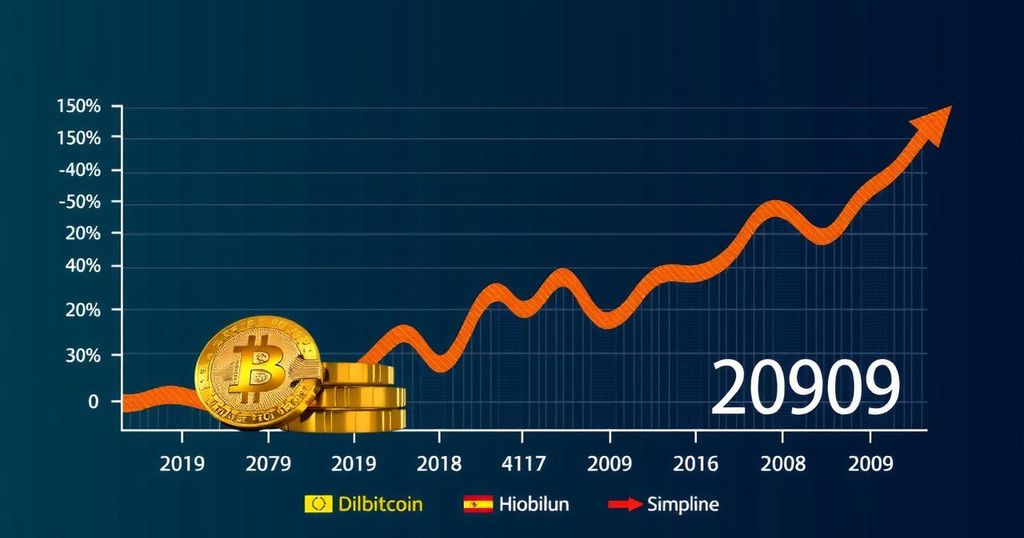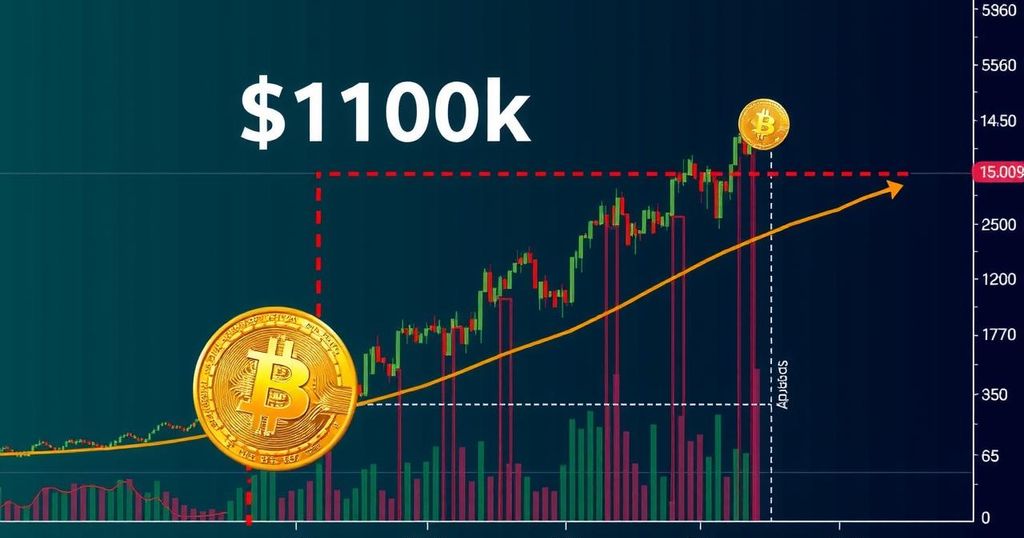A Comprehensive Overview of Bitcoin’s Price History from 2009 to 2024
Bitcoin (BTC) has evolved from a practically valueless digital currency launched in 2009 by Satoshi Nakamoto to a significant investment asset, reaching an all-time high of $73,750 in March 2024. Despite facing volatility and market corrections, Bitcoin recorded impressive growth, returning over 230% in value over ten years. It started trading at negligible prices and has overcome various challenges, including regulatory scrutiny and macroeconomic pressures, to maintain a market capitalization that peaked at $1.44 trillion.
Bitcoin (BTC), launched in 2009 by the mysterious Satoshi Nakamoto, has undergone a remarkable transformation from a virtually worthless digital asset to a significant player in the financial landscape. Despite a tumultuous price trajectory marked by steep rises and drops, Bitcoin achieved an all-time high of $73,750 on March 14, 2024, alongside a market capitalization of $1.44 trillion. Its storied past includes remarkable performances where Bitcoin returned over 230% in value in the decade leading up to March 2021, solidifying its status as a mainstream investment. Upon closer examination of Bitcoin’s price history, it is evident that the digital currency has faced numerous challenges. Initially valued at just fractions of a penny, the first transaction that conferred value to Bitcoin occurred in October 2009, when Martti Malmi sold 5,050 Bitcoins for approximately $5.02, establishing a price of $0.0009 per coin. Fast forward to 2024, Bitcoin traded at $67,755 on October 16, after experiencing a decline from its peak, driven by market fears of a U.S. recession and geopolitical tensions. Despite facing corrections, Bitcoin’s value maintained some resilience due to significant regulatory milestones, such as the approval of multiple Spot Bitcoin ETFs. In examining recent price fluctuations, Bitcoin began 2024 trading around $43,906, rebounding to a notable $62,642 by February 29, and finally breaching $73,750 in March. However, the impacts of the April 2024 halving event and broader market conditions contributed to a price decline below $60,000 in May. The year 2023 was characterized by a significant recovery from a trough of $16,000 in January to $42,809 by December, despite inflationary pressures. Bitcoin’s historical journey cannot be understood without mentioning its early years (2009-2012) when interest in the cryptocurrency was limited, and infrastructure was rudimentary. One of the notable milestones was Laszlo Hanyecz’s purchase of two pizzas for 10,000 Bitcoins in 2010, underscoring Bitcoin’s nascent status at the time. By 2011, Bitcoin’s value surged to $2,471, but the rally was followed by dramatic corrections, highlighting the asset’s volatility and the skepticism surrounding its long-term viability.
Bitcoin has rapidly evolved since its inception in 2009, with significant fluctuations in its price reflecting both market conditions and investor sentiment. Its journey from a fringe digital asset to a mainstream investment vehicle has captured global attention, especially after remarkable price gains over the last decade. The cryptocurrency market is influenced by various factors, including regulatory developments, global economic conditions, and public perception. Understanding Bitcoin’s journey through financial ups and downs provides essential insight into its current and future potential as an investment.
In conclusion, Bitcoin’s price history is a compelling narrative of volatility, resilience, and transformation. From its humble beginnings valued at fractions of a penny to its peak of $73,750 in March 2024, Bitcoin has demonstrated extraordinary growth and resilience amid macroeconomic challenges. The cryptocurrency faces ongoing scrutiny, yet regulatory developments and market recovery suggest a future that remains vibrant. As Bitcoin continues its journey, it remains pivotal to observe the evolving dynamics that shape its market valuation and investor interest.
Original Source: www.forbes.com








Post Comment